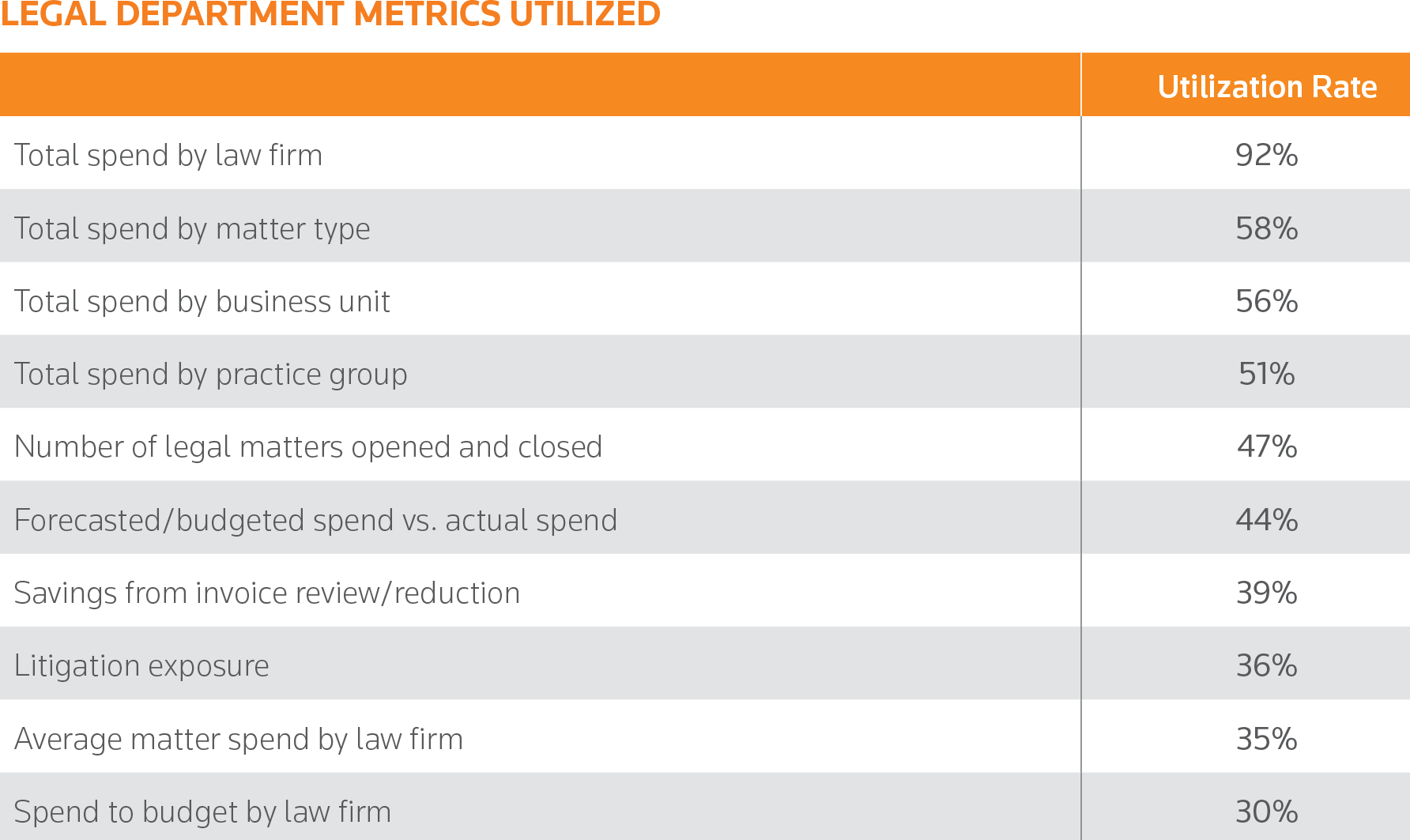Companies, particularly large ones, rely on a precise understanding of their costs and revenue to drive profitability.
Just as the business wants to know that its manufacturing cost is X and payroll is Y, so it expects its legal department to accurately project that the new acquisition will cost Z to close. Historically, this has meant the legal department must turn to its outside counsel for these projections. But pricing these complex matters is difficult, with total costs varying hundreds of thousands of dollars depending on the details.
Nevertheless, clients continue to push for increased transparency, tighter budget controls, and greater predictability. These requests require detailed data, oversight, and control. And if firms can’t deliver, clients are putting their own technology in place to track key metrics and drive desired outcomes.
Therein lies the rub
In a study of more than 200 legal departments, 57% identified themselves as “proactive in spend management.” That is, utilizing tactics such as billing guidelines, invoice audits, and legal invoice review to control costs. These efforts have been enabled by spend and matter management technologies, both identified by respondents as foundational for today’s corporate legal departments.
In fact, the top two “high priority” issues reported by these departments were controlling outside counsel costs and using technology to simplify workflow and manual processes. These departments aren’t waiting for firms to find ways of predicting and controlling costs. They’re taking control of the relationship and setting expectations in the absence of guidance from the firm.
The numbers that matter to clients
As you might expect, most departments surveyed report that they track things like total spend by law firm, matter type, and business unit. But several more specific metrics are tracked by a surprisingly large percentage of departments.

Average matter spend by firm, spend to budget by firm, and legal spend to revenue are tracked by a number of these departments.
Average matter spend by firm is notable in that it aggregates all the work your firm performs and compares it against your competitors. It does not account for quality of outcomes and leaves no room for explanations of value or the cost of one matter vs. another. This simple, quantitative comparison gives insight into the priorities of these departments and suggests a potential focus area for your firm.
Similarly, the rise of legal operations and the request for proposal (RFP) have empowered clients to impose strict budgets on their firms. It’s clear that some firms are more successful meeting this demand than others. Even if we were to set the cost aside, clients certainly have a higher estimation of firms that can manage to their budgets than those who can’t.
Perhaps the most challenging metric for both firms and clients is legal spend to revenue. The business appears to seek only to drive costs down. But legal departments must deliver the best outcomes and firms need to remain profitable. Firms who proactively initiate conversations about this metric can position themselves as collaborators — creating new strategies to maximize benefit for both parties while differentiating from other firms.
The technology that matters to firms
Clients identified e-billing/spend and matter management software as the most important emerging technology solutions for their departments. Savvy firms have an opportunity to make complementary investments that enable similar tracking, analytics, and transparency. Firm-focused matter management and practice management tools are excellent places to begin.
But these investments are only as good as the results they drive. The data suggests that clients are emboldened by the outcomes of their tech investments and pushing for more. New metrics and key performance indicators are symptoms of real process change and new ways of working. While tracking these numbers is comparatively simple, moving them requires serious effort.
Firms exploring matter or practice management software must be driven by strategy. A technology purchase motivated solely by the desire to catch up to or overtake clients’ technology is likely to fail. Though technology parity and a level playing ground are important, these investments must be supported by thoughtful change management strategies and a commitment to new processes.
The results that matter to everyone
Corporate clients don’t really want more technology, numbers, or operations staff. They don’t want to spend their time doing invoice audits or enforcing billing guidelines. They want to focus on delivering the best legal advice and outcomes for their business within the constraints they’ve been given.
Client tactics like legal technology and spend management are born of necessity. Firms who can’t deliver what clients truly need — freedom to focus on their clients — have brought this kind of oversight on themselves. Had firms, not clients, been at the vanguard of these kinds of tech and process innovations, the industry may look very different today.
But the technology train has left the station. Corporate clients have realized the control they can exert over their firms and will continue to leverage these tactics to reduce costs and drive efficiencies. Speaking their language through technology and data is the first step toward creating a new, more fruitful dynamic between law firms and their clients. The key question facing firms is not whether their clients are outstripping them with technology, but how the right technology can help firms deliver the kinds of efficiencies clients are seeking.
Learn more about getting the edge on your competition with data-driven client service. Read the white paper, The New Legal Business: Rethinking Competitive Advantage.









